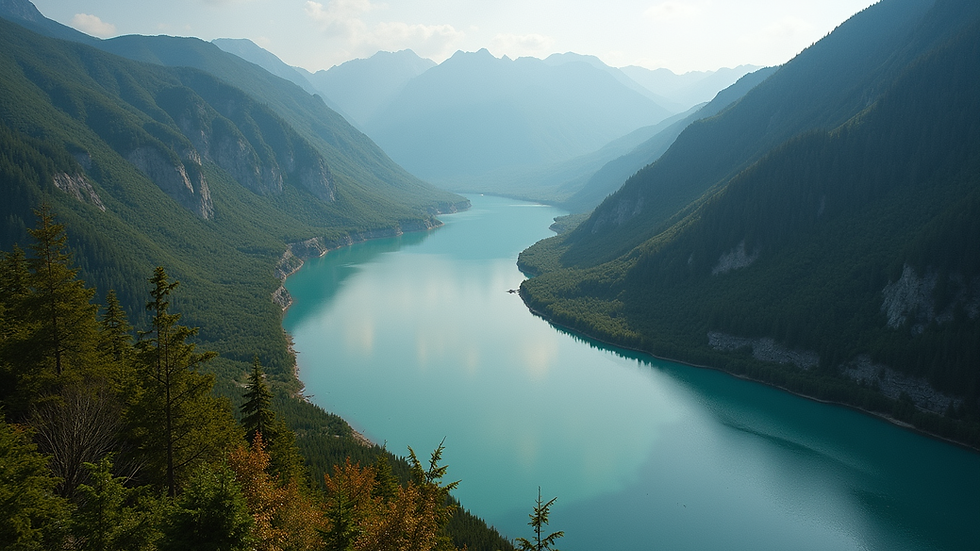- Mike Powers
- 9 hours ago
- 4 min read
Lighting plays a crucial role in shaping the ambiance and functionality of any space. When it comes to creating a warm, inviting atmosphere with a touch of natural charm, customized rustic lighting stands out as an excellent choice. This style combines the rugged beauty of natural materials with thoughtful design, making it perfect for various rooms in your home. Whether you want to brighten up your living room, kitchen, bedroom, or even outdoor spaces, rustic lighting can add character and coziness.
The Charm of Customized Rustic Lighting
Rustic lighting is all about embracing natural textures and earthy tones. It often features materials like wood, wrought iron, and aged metals, which bring a sense of history and craftsmanship to your interiors. Customized rustic lighting takes this concept further by tailoring fixtures to fit your specific space and style preferences.
For example, a handcrafted wooden chandelier with iron accents can become a stunning centerpiece in a dining room. Meanwhile, a set of pendant lights made from reclaimed barn wood can add a unique touch to your kitchen island. The beauty of customization is that you can choose the size, shape, and finish to perfectly complement your décor.
Benefits of customized rustic lighting include:
Unique, one-of-a-kind fixtures
Enhanced warmth and texture in your rooms
Flexibility to match various interior styles, from farmhouse to industrial
Durable materials that age beautifully over time

How to Incorporate Customized Rustic Lighting in Different Rooms
Each room in your home has its own lighting needs and style considerations. Here’s how you can use customized rustic lighting effectively in various spaces:
Living Room
The living room is often the heart of the home, where family and friends gather. Rustic lighting here should create a welcoming and comfortable atmosphere. Consider a large, statement chandelier made from distressed wood and metal. Complement it with wall sconces featuring Edison bulbs for a warm glow.
Kitchen
In the kitchen, lighting needs to be both functional and stylish. Customized pendant lights over the island or sink can provide focused task lighting while adding rustic charm. Look for fixtures with natural wood finishes or metal cages to enhance the rustic vibe.
Bedroom
For bedrooms, softer lighting is key. Rustic table lamps with wooden bases or lantern-style fixtures can create a cozy retreat. Customized rustic lighting can also include ceiling fixtures with dimmable bulbs to adjust the mood.
Bathroom
Rustic lighting in bathrooms can add a spa-like feel. Consider sconces with frosted glass and wrought iron details. Customized fixtures that resist moisture and match your vanity’s wood tones will tie the look together.
Outdoor Spaces
Outdoor lighting is essential for safety and ambiance. Rustic lanterns, string lights, and wall-mounted fixtures made from weather-resistant materials can enhance patios, porches, and gardens.

What is the Rule of Thumb for Outdoor Lighting?
When planning outdoor lighting, there are a few key guidelines to keep in mind to ensure safety, functionality, and aesthetic appeal:
Layer your lighting: Use a combination of ambient, task, and accent lighting to create depth and interest.
Consider scale: Fixtures should be proportional to the space and architectural features.
Use warm light: Choose bulbs with a warm color temperature (2700K to 3000K) to create a cozy atmosphere.
Focus on pathways and entrances: Illuminate walkways, steps, and doorways to prevent accidents.
Choose durable materials: Outdoor fixtures should withstand weather conditions and resist rust or corrosion.
Customized rustic lighting options for outdoors often include lantern-style fixtures, wrought iron sconces, and string lights with vintage bulbs. These choices blend functionality with rustic aesthetics, enhancing your outdoor living areas beautifully.

Tips for Choosing the Right Customized Rustic Lighting
Selecting the perfect rustic lighting fixtures involves more than just picking something that looks good. Here are some practical tips to guide your decision:
Assess your space: Measure the room and consider ceiling height to determine the appropriate size and number of fixtures.
Match your décor: Choose materials and finishes that complement your existing furniture and color scheme.
Think about functionality: Identify areas that need bright task lighting versus those suited for softer ambient light.
Consider energy efficiency: Opt for LED bulbs that save energy and last longer.
Work with a professional: Custom lighting designers can help create pieces that fit your vision and space perfectly.
By following these tips, you can ensure your customized rustic lighting not only looks stunning but also serves your practical needs.
Why Choose Custom Rustic Lighting?
Off-the-shelf lighting fixtures often lack the personality and craftsmanship that custom pieces offer. When you invest in custom rustic lighting, you get:
Personalized design: Tailored to your taste and room dimensions.
Superior quality: Handcrafted with attention to detail.
Unique character: Each piece tells a story and adds warmth.
Long-term value: Durable materials and timeless style.
Custom rustic lighting is an investment in your home’s atmosphere and aesthetic. It transforms ordinary rooms into inviting spaces filled with charm and character.
Lighting is more than just illumination - it’s a way to express style and create mood. Customized rustic lighting offers endless possibilities to enhance every room in your home with warmth, texture, and personality. Whether you prefer bold statement pieces or subtle accents, this style can be adapted to fit your needs perfectly. Explore the options and bring the beauty of rustic design into your living spaces today.








